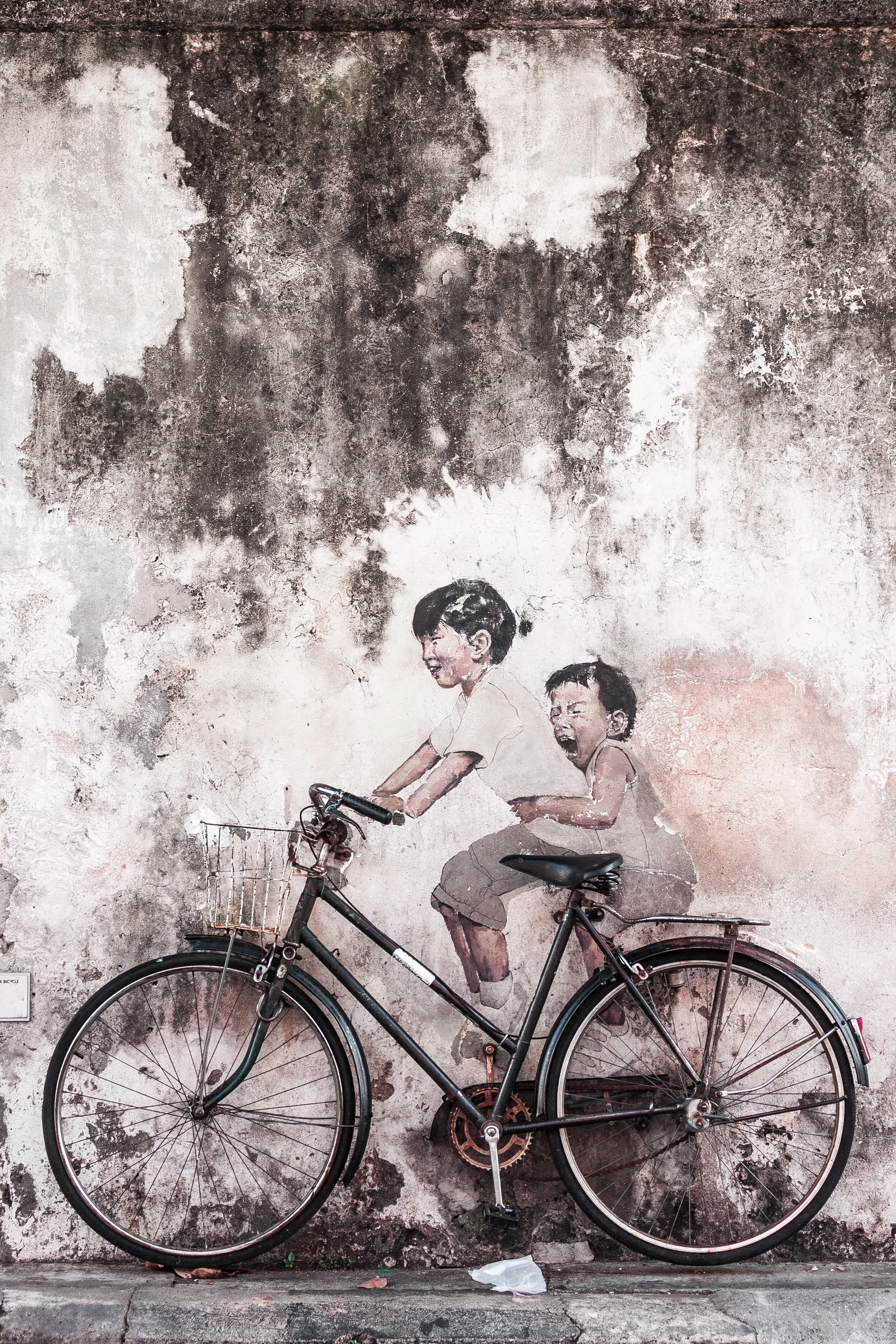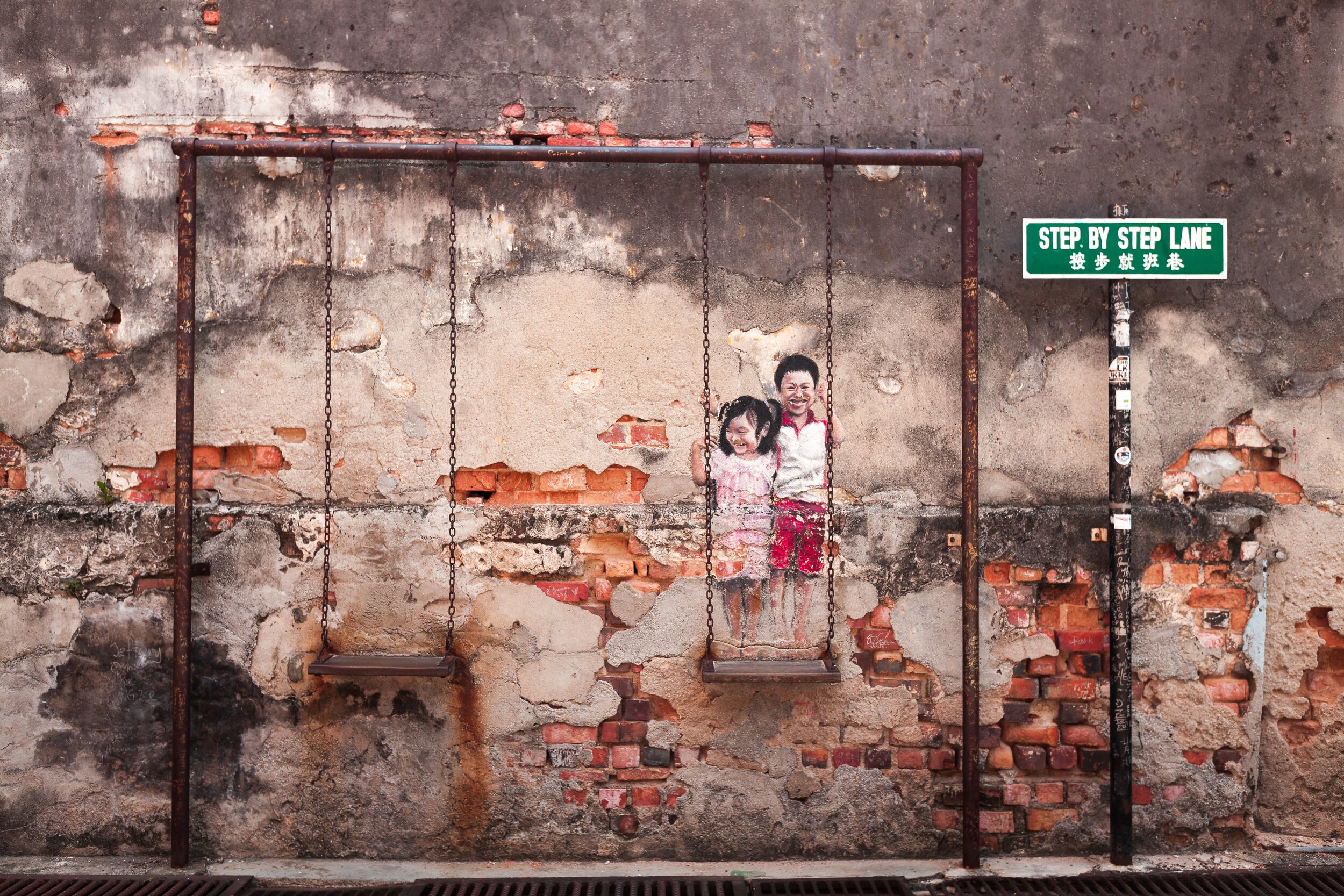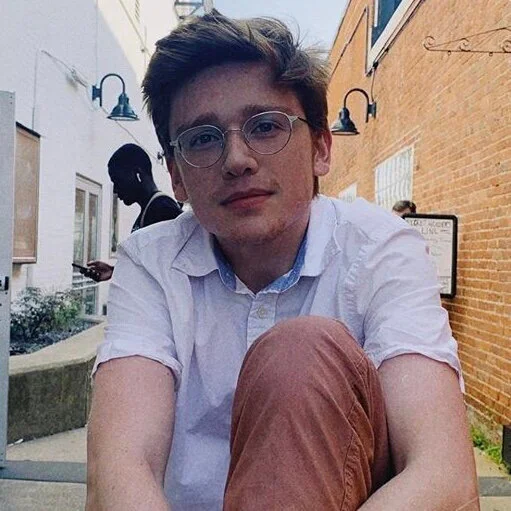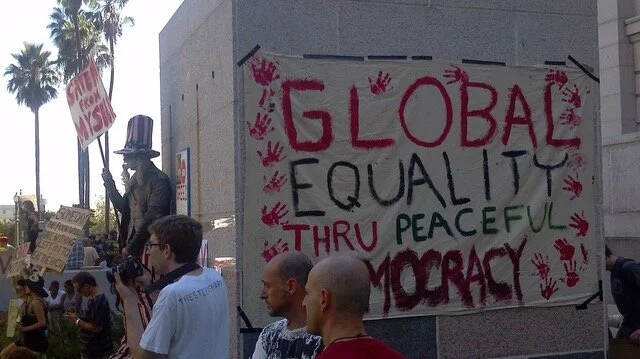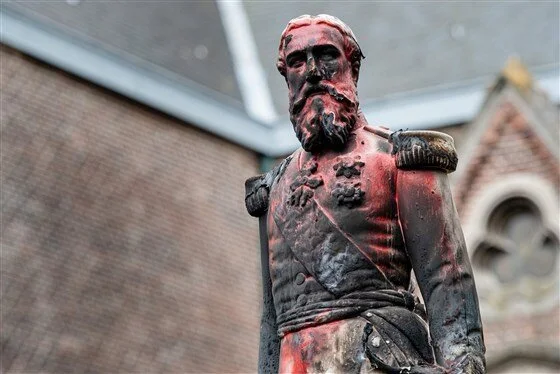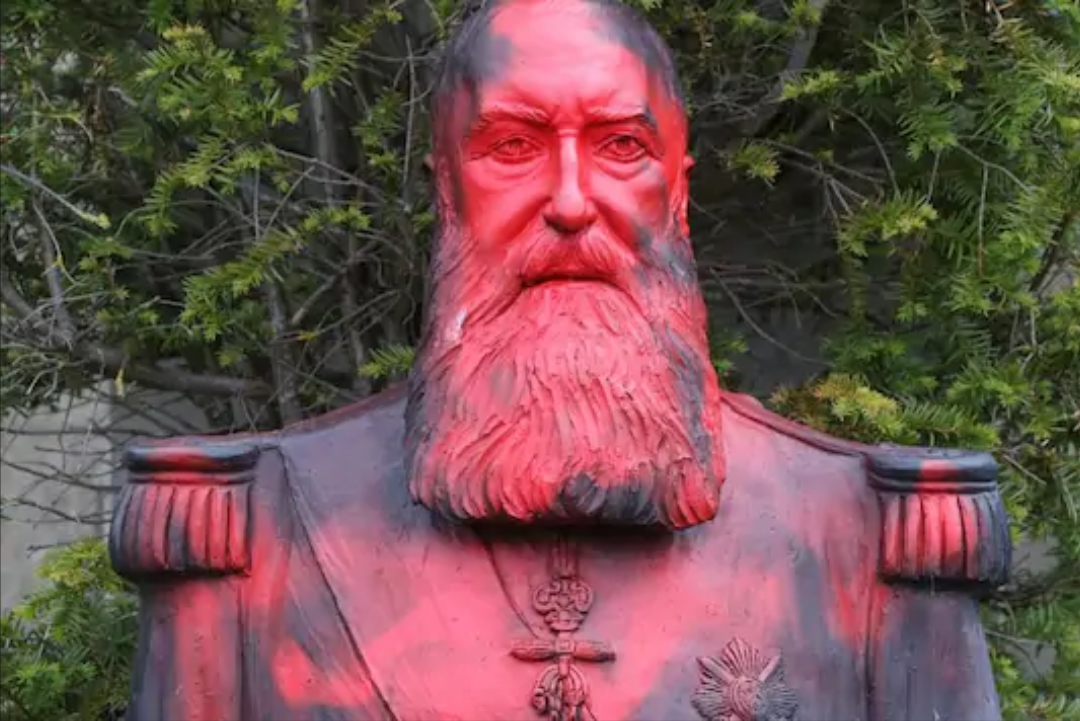In Brazil, domestic violence endangers the lives and limits the aspirations of women across all age groups. One woman—Panmela Castro of Rio de Janeiro—has crafted a unique approach to speak out against the abuse she has witnessed her mother, aunts and friends experience, as well as experienced herself. By producing inspiring graffiti art with others who have survived or witnessed domestic abuse, Castro has united women in a common cause: to break the silence on domestic violence and protest its normalization. She is now the president of the Nami Network, an organization which promotes women’s rights through graffiti. Castro’s project has spread to Peru and neighboring countries, and she was named one of the 150 women who have shaken the world by Newsweek.
Spain’s Graffiti Phenomenon
Spain is known for the street art that decorates major cities and towns all over the country, with multiple Spanish street artists reaching global acclaim. The street art phenomenon is especially significant not only for the identity it gives to Spain, but also for its relation to contemporary culture and expression.
Graffiti in Alicante, Spain. Photo by Ralph (Ravi) Kayden.
Mural in Madrid, Spain. Photo by Nancy O'Connor.
When walking the streets of Valencia, Spain, nowhere is the graffiti more prolific than Barrio Carmen, the historic district of Valencia. Tall buildings along winding stone alleys are adorned with color: depicting abstract images, portraits, and scenery reminiscent to that of the artists of the Escuela de Bellas Artes. Property owners often commission artists to decorate the entrance to their buildings, establishing a connection to the culture of artistic exhibition that exists within the city. Valencia is just one home to the countless networks of street artists across Spain: graffiti peppers the streets and surfaces of major cities, villages, and neighborhoods alike across the nation.
In Barcelona and Madrid, the real graffiti phenomenon exists not in the streets, but underground: along the sides of metro cars. Given the costs of cleaning and repairing painted cars, this form of graffiti is revered as the most risky, and the most thrilling. Barcelona has begun to heighten its police presence in the metros to prevent vandalism, but this measure has only served to make the artists more crafty. Rappelling through vents, jumping fences, and running from the police have become commonplace in the laundry list of a street artist’s activities.
Saville Street, Saville, Spain. Photo by Look Up Look Down Photography.
The two principles that unite the diverse network of graffiti artists throughout Spain are anonymity and adventure. In this way, street art becomes an equalizing force for expression. Of the thousands of graffiti artists throughout Spain, there exists no single class or personal affiliation. From this anonymity arises solidarity; artists sometimes work in teams or paint in recognizable styles, but rarely is the actual identity of an artist public.
Regarding adventure, José Sánchez, an anthropological researcher at Pompeu Fabra University, describes that from graffiti, artists find both a sense of belonging as well as adrenaline. There is, then, a dual impetus: to create some sort of permanence through visual expression, but also for the rush of the moment: the danger of painting in precarious situations, or of attempting to evade vandalism charges from the police. Sánchez offers the notion that the street art phenomenon arises as a microcosm for a contemporary society entrenched in immediate gratification, tactile pleasures, and hedonism, which Sánchez identifies mostly as the impact of youth culture. This explanation, however, seems to only cover part of the multifaceted nature of graffiti and its specific mode of public speech.
Mahón, Menorca, Spain. Photo by JR Harris.
One prolific street artist from the Gijon region of Northern Spain, who goes by the moniker “Señor X,” has become widely known as “Spain’s Banksy,” in reference to the mysterious British graffiti artist who has gained significant global acclaim in recent decades. Señor X’s work is focused on social commentary: the vast majority of his murals are anti-capitalist and anti-establishment. Señor X’s dynamic portfolio represents just part of the larger body of street art created in protest.
Furthermore, the debate over graffiti as street art versus graffiti as vandalism is just one feature over the larger question of legitimate protest. Art and visual expression have long been means of protest: Picasso’s Guernica, one of the most renowned pieces in the Spanish canon was painted in response to the bombing of the civilians of Guernica, Spain during the Spanish Civil War. The murals of artists such as Señor X represent many of the same sentiments and involve similar artistic meticulousness, but are illegal, rather than revered. Nonetheless, street art remains an integral part of identity and expression within Spain, and furthers discussions as to the nature of protest and youth culture globally.
HALLIE GRIFFITHS
Hallie is an undergraduate at the University of Virginia studying Foreign Affairs and Spanish. After graduation, she hopes to apply her passion for travel and social action toward a career in intelligence and policy analysis. Outside of the classroom, she can be found, quite literally, outside: backpacking, rock climbing, or skiing with her friends.
‘Malaysia’s Banksy’ Brings Art Lovers—and Overtourism—to Penang
Ernest Zacharevic is a Lithuanian-born artist who made his mark creating iconic street murals on the island of Penang in Malaysia. Despite good intentions, Zacharevic’s work prompted the rise of tourist attractions that lack the soul and authenticity that made Penang a UNESCO World Heritage Site in the first place.
The iconic “Little Children on a Bicycle” mural in Penang. Yaopey Yong. Unsplash.
Penang’s historical capital, George Town, was officially inscribed as a UNESCO World Heritage Site in 2008. Since the 18th century, this Malaysian city has been a prolific hub of cultural and commercial exchange. Today, it remains a multicultural hot spot. George Town is also home to a unique layout of mixed architecture that also reflects the region’s history. From its colonial-style British office buildings to its rustic Chinese shophouses, George Town’s mismatched grid of alleyways and side streets bolsters the place’s almost stuck in time sentiment. To further enhance George Town and its diverse history, the George Town Festival was launched in 2010 as a platform for dance, theater and other regional artistic endeavors.
In the midst of this budding art movement, Lithuanian-born artist Ernest Zacharevic began to make his literal mark on the walls of George Town. As an experimentalist known by some as “Malaysia’s Banksy,” Zacharevic’s style revolves around ever-changing concepts, manifesting in his preference for outdoor art. Zacharevic’s primary interest lies in the relationship between art and the urban landscape. Consequently, he mainly flits between stencil, spray and other types of tools conducive to dynamic and public pieces.
One of the more famous interactive pieces. Yaopey Yong. Unsplash.
Although local pieces funded by Sculpture At Work also grace the walls of George Town, Zacharevic’s pieces are the main attraction thanks to the George Town Festival 2012 project “Mirrors George Town.” His iconic and sometimes interactive pieces like “Little Children on a Bicycle” and “Brother and Sister on a Swing” became hot-ticket items for both visitors and locals alike to experience. The open-air exhibitions became so popular that various travel blogs offered the best walking maps for viewing the murals.
“The Little Boy with Pet Dinosaur” and “Boy on a Bike” murals side by side. Travelationship. CC BY-NC-ND 2.0.
In 2013, Chairman of Penang Global Tourism Ooi Geok Ling felt that Ernest Zacharevic “captured the essence of Penang. I know he spent a lot of time here, soaking it all in when he was visiting. He could translate that into his murals.” Ling also believed that Zacharevic’s influence would also help to expand the reach of local artists and small galleries in the city. Indeed, most of Zacharevic’s pieces are reflective of the city and country’s diverse populace. Murals portray children cycling through the city, a painter attending to a pair of clogs, and even more modern scenes of phone booths and curious cats.
Since the creation of these murals, Penang has experienced an influx of “Instagram tourists” and the subsequent boom of businesses that cater to them. The town’s soul, as the South China Morning Post wrote, has been “warped.” Before the worldwide lockdown, older buildings in George Town had begun renovating in a way that catered to foreign tastes. Cookie-cutter coffee shops, museums and art galleries began lining the centuries-old landscape, sapping away at the gritty authenticity of the once safely obscure town.
In response to this commercialization, Ernest Zacharevic made a statement on his Instagram in July 2019. He lamented, “Myself and many others blame my work for Armenian Street being a center of [the] tourist route in Penang.” He called the construction of Instagram-friendly places a “circus” and a threat to George Town’s status as a UNESCO World Heritage Site.
Since the worldwide lockdown, however, locals have made it back into the spotlight. Though the Penang economy today is largely devoid of tourist dollars, the city is also free of the overtourism and traffic jams that congested its streets. Nikkei Asia reports that locals now have the chance to reclaim spaces that gentrification took away. Hawker stalls and other peddlers are also refocusing on the needs of residents and the smaller but more consistent business they provide. Local shopkeepers feel that the lockdown has provided the city an unexpected but much-needed reset button. In the wake of this worldwide pause, locals are starting to explore more sustainable possibilities—ones that don’t compromise the historical integrity of George Town or the well-being of its residents.
Rhiannon Koh
Rhiannon earned her B.A. in Urban Studies & Planning from UC San Diego. Her honors thesis was a speculative fiction piece exploring the aspects of surveillance technology, climate change, and the future of urbanized humanity. She is committed to expanding the stories we tell.
Street Artists Save Protest Masterpieces
Artists adorned New York City with Black Lives Matter tributes. But what becomes of graffiti when the world tries to erase it?
A mural in Minneapolis remembers George Floyd’s life. Lorie Shaull. CC BY-SA 2.0.
SoHo prepared for the worst. In the days before the election, the Manhattan neighborhood’s famed boutiques and shops barricaded their windows with plywood to protect their merchandise from looters. After a summer of uprising, one more round of rioting seemed inevitable. The wooden boards provided yet another reminder of how unlivable 2020 had become. It was as if the neighborhood shut its eyes to a reality too bleak to bear.
Enter into this dismal cityscape the artists who first put SoHo on the map. Before high-end shops and wealthy shoppers gentrified this stylish slice of Manhattan, street artists like Keith Haring and Jean-Michel Basquiat adorned its concrete buildings with graffiti. In the ‘80s and ‘90s, countless creatives made SoHo an international hub for artists of all stripes. Now, history comes full circle. Street artists see a rare and irresistible opportunity to take the plywood covering SoHo’s shops and create masterpieces.
Peace, love and police abolition. iamrenny. CCO 1.0.
Among them are Konstance Patton and Trevor Croop. This past summer, Patton focused on her Goddess Project, adorning the streets with vibrant, noble portraits of Black and Indigenous women. Croop spent much of 2020 abroad, leading art workshops and reconnecting with his Lebanese heritage. Within days of his return to the U.S., the two met on the street, throwing up artwork side by side.
Both seasoned street artists, they knew firsthand how transitory the form can be. An artist might spend hours on a painting that will be erased in a matter of days. The situation in SoHo is much more fraught. When businesses began reopening, they trashed the pieces painted on sheets of plywood. Others scrambled to grab as many panels as they could and loaded them into vans to sell to the highest bidder.
Can’t we just get along? iamrenny. CCO 1.0.
Recognizing the inestimable value of these pieces of art, Patton and Croop founded the SoHo Renaissance Factory (SRF), which stores wooden boards bearing protest art in an empty SoHo dance studio. It consists of themselves and three fellow artists: Sule, Amir Diop and Brendan McNally. They developed an extensive network of friends, artists and security guards who alert them when a work of art is about to be trashed. They rush to the scene in an attempt to save the piece. Sometimes they arrive in the nick of time; other times they do not.
SRF member Amir Diop experienced the latter firsthand. During the protests demanding justice for the death of George Floyd, Diop painted a mural on the plywood boards covering the Museum of Modern Art’s (MoMA) design store. It showed smiling faces circling around a black hole beneath the words “Take me to a place where Black Lives Matter.” Only days after he painted it, MoMA tore down the piece and shredded it. In the words of Diop, “They said that place doesn’t exist and they just threw it in the garbage.”
Spray their names. drburtoni. CC BY-NC-ND 2.0.
Street artists enjoy few legal protections. The Visual Artists Rights Act (VARA) of 1990 protected art from being mutilated or destroyed but only if it reached a “recognized stature.” In the digital age, this term is ambiguous. Instead of a signature, artists leave their social media handles in a painting’s corner, raising the question of whether online fame qualifies under VARA. For the time being, however, artists cannot depend on the art establishment. If the MoMA won’t recognize art, it is unlikely that a court will.
A moment to remember. drburtoni. CC BY-NC-ND 2.0.
The future of the SRF is unclear, but it does look promising. The group recently struck a deal with Mana Contemporary, an arts center in New Jersey, to display the wooden boards in a public show next year when COVID-19 restrictions hopefully ease up. For now, the SRF has moved to a spacious studio in the NoMo SoHo Hotel, where it landed a residency. The new space offers a comfortable environment to create art, but the work of the SRF will always be rooted in the streets.
See the work of the SoHo Renaissance Factory on its website:
https://sohorenaissancefactory.com/
Or check out each artist’s work on their Instagram pages:
Konstance Patton - @konartstudio
Trevor Croop - @light.noise
Sule - @sulecantcook
Amir Diop - @amir.diop99
Brendan McNally - @brendantmcnally
You can also support the mission of the SoHo Renaissance Factory by getting involved with organizations that support racial justice, some of them listed below:
Black Lives Matter - https://secure.actblue.com/donate/ms_blm_homepage_2019
Color of Change - https://secure.actblue.com/contribute/page/support-us?refcode=coc_website_popup
SURJ - https://www.showingupforracialjustice.org/donate-to-surj.html
Organizations for Black Struggle - https://www.obs-stl.org/
Project South - https://projectsouth.org/
Michael McCarthy
Michael is an undergraduate student at Haverford College, dodging the pandemic by taking a gap year. He writes in a variety of genres, and his time in high school debate renders political writing an inevitable fascination. Writing at Catalyst and the Bi-Co News, a student-run newspaper, provides an outlet for this passion. In the future, he intends to keep writing in mediums both informative and creative.
A Look Into Reykjavik’s Eclectic Collection of Street Art
The capital of Iceland is world renowned for its street art. Learn more about the current community of street artists, their dynamic murals and urban art landscapes.
Read MoreProtest in Los Angeles. Steve Devol. CC 2.0
How Defamed Statues Reflect Protests Around the World
On May 25, the world erupted in response to the death of George Floyd. That moment and the protests that followed led to actions such as public marches in the face of COVID-19 guidelines and the painting of murals in places as far off as Idlib, Syria. In the past week, however, the most prevalent form of the protests have been the tearing down of statues of figures affiliated with racism.
The Movement Revitalized
The entire world has reacted to the events that happened in Minneapolis, but Floyd’s death only served to highlight current battles against racism. In London, 29-year-old Alex, an organizer for Black Lives Matter U.K., stated that “we stand alone in terms of creating our own moment- not just responding to what’s happened in the U.S.” The United Kingdom was one of the first places to start tearing down statues, sparking a movement that resonated on a global scale.
In Bristol, England, a statue of Edward Colston, known for his involvement with the trans-Atlantic slave trade, was torn down and thrown into the harbor. In Brussels, Belgium, “demonstrators tore down a statue of King Leopold II, the Belgian ruler who killed millions of Congolese people, and hoisted the flag of the Democratic Republic of Congo below it.” In Richmond, Virginia, a statue of Confederate Gen. Robert E. Lee has been defaced and ruined. Even in New Zealand, a statue of British Capt. John Fane Charles Hamilton has been defaced and attempted to be torn down because of his killing of thousands of Maori people in the 19th century. Destroying statues is not necessarily a new thing, normally coming about in rebellion when people believe a certain message is being praised when it shouldn’t. “We have as humans been making monuments to glorify people and ideas since we started making art,” says art historian Jonah Engel Bromwich,” and since we started making statues, other people have started tearing them down.” The act of citizens tearing down statues all across the world serves to show the feelings of injustice that many have felt for a long time regarding issues such as racism.
The world has been battling racism for a long time and the events in Minneapolis only brought more attention to antiracist movements. Especially in light of recent events, the destruction and defamation of statues created to honor public leaders has been a common way to showcase discontent. These acts have worked to bring attention to the inequality and problems that exist today as citizens across the world work tirelessly to bring light to problems of racism found in every culture.
Elizabeth Misnick
is a Professional Writing and Rhetoric major at Baylor University. She grew up in a military family and lived in Europe for almost half her life, traveling and living in different countries. She hopes to continue writing professionally throughout her career and publish her writing in the future.
Vandalized statue of King Leopold II in Antwerp prior to removal. Jonas Roosens. CC 2.0
Belgium Acknowledges Racist Past with Removal of King Leopold II Statue
The Black Lives Matter movement in the United States has encouraged many to speak up against the racism that continues to plague the world. Along with addressing present injustices, people are starting to take a look at the past. In the U.S., there have been numerous removals of statues of Confederate soldiers, leaders and slave owners such as Robert E. Lee, Jefferson Davis, and John B. Castleman. This movement to acknowledge the past has now sparked international attention.
On June 9, Belgium removed a statue in Antwerp of King Leopold II, a tyrant who took control of the Democratic Republic of Congo during the 19th century. Children in Belgian schools learn that King Leopold was a hero who brought civilization to Africa. While his reign expanded European colonization, it cost the lives of millions who were exploited due to brutal labor practices.
The reality of King Leopold II is much darker. He ruled the Congo between 1865 and 1909 as many other European countries were starting to settle into Africa for its resources and land. To Leopold, though, the Congo became his personal possession instead of a Belgian colony. Under his orders, troops worked men to death to meet his high demands for rubber and ivory. If a village was unable to produce the quota set by Leopold, its residents often had their hands severed as punishment. Women and children were often held captive and sent away to Belgium, and an estimated 10 million Congolese lost their lives. Congo became a part of Belgium only after Leopold’s death, and the country gained its independence in 1960.
After hearing about the death of George Floyd in the U.S., many young Belgians began protesting in the streets asking their government to acknowledge the truth of its past. Across the country, many have taken their frustrations out on Leopold’s statues by setting them on fire and painting them red to symbolize the bloodshed Belgium’s colonization brought to the people of the Congo. After gaining 64,000 signatures on a petition, Belgium is working to remove all of Leopold’s statues from the country.
Vandalized statue of King Leopold II near Brussels. Yves Herman. CC 2.0
There is a larger motive behind the removals, however. As mentioned, King Leopold II is praised for his contributions to Belgium’s colonization. These statues stand as a reminder of that racist past while also praising it. In this case, King Leopold is viewed as “doing what is best” for the country even as he forced millions into forced labor and killed them in the process. It has been embedded in the minds of Belgians that this behavior is somewhat acceptable. With the removal of statues like this, it is hoped that people’s minds will change to acknowledge that this type of behavior is never OK.
Eva Ashbaugh
is a Political Science and Gender, Sexuality, and Women's Studies double major at the University of Pittsburgh. As a political science major concentrating on International Relations, she is passionate about human rights, foreign policy, and fighting for equality. She hopes to one day travel and help educate people to make the world a better place.
Tagging Germany with Love
For the past three decades, Irmela Mensah-Schramm has made it her mission to eradicate hate in the world. Armed with a spray can, a scraper and a bottle of nail polish remover, the 71-year-old activist takes to the streets of Berlin to remove and cover up Nazi imagery and racist graffiti. After visiting a concentration camp for the first time, Schramm was moved to do her part to build a better future. Today, she’s removed over 77,500 neo-Nazi stickers all over Germany, and she has no intentions of stopping. Wherever there is hate in the world, Schramm will be there, can in hand.
EGYPT: Share The Word Project - Cairo
Worldwide art project mixing graffiti, photography and film, and using art to create bridges between cultures. Led by photographer Spag and graffiti artist Seb Toussaint, the project has taken place in 7 slums worldwide. This episode is based in Cairo, Egypt.
This video was shot in Mazarita, a neighbourhood situated in the South of Cairo. In a little more than 4 weeks, 15 murals were painted with words chosen by the inhabitants. All the murals were painted in freestyle.






